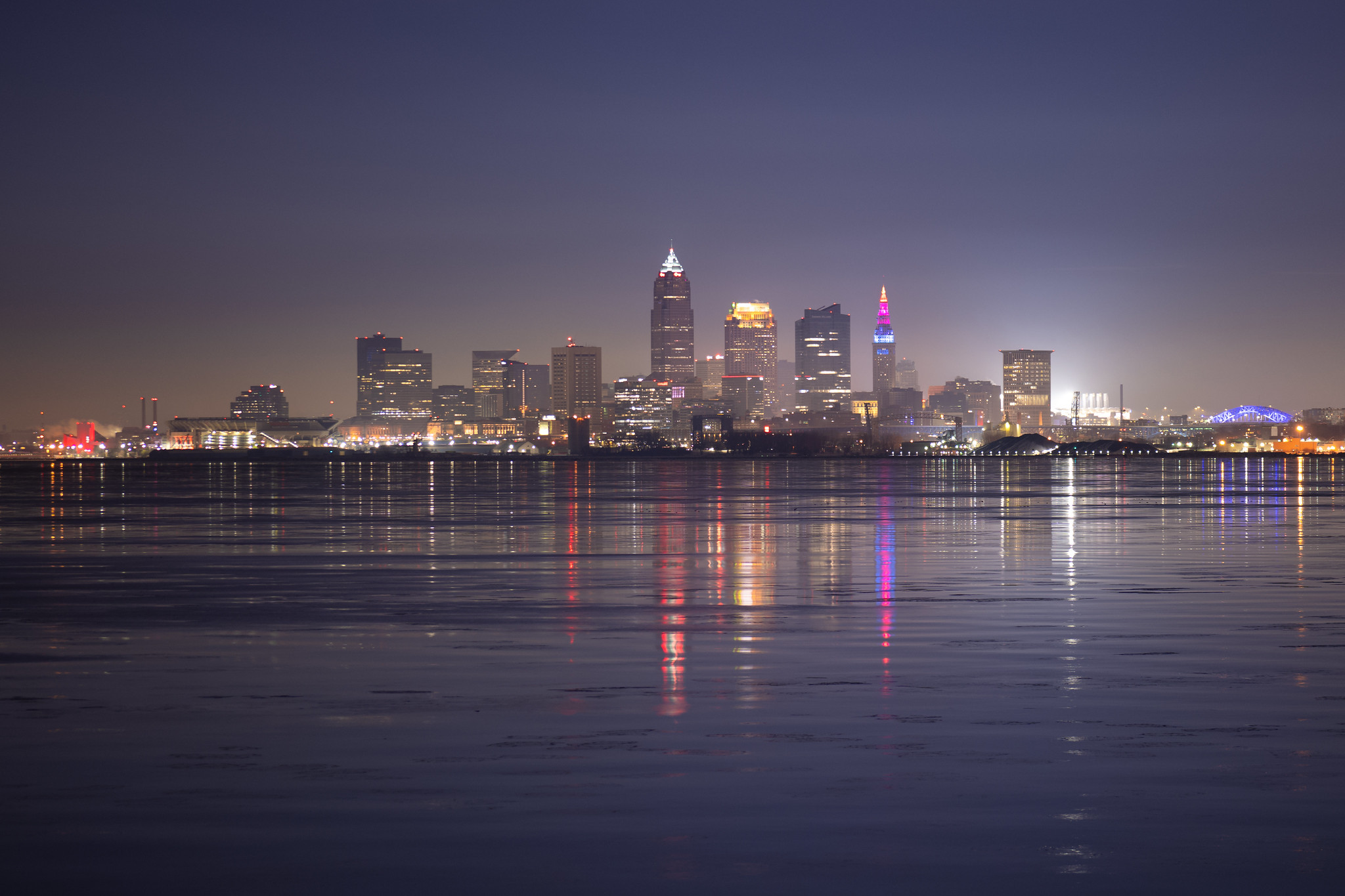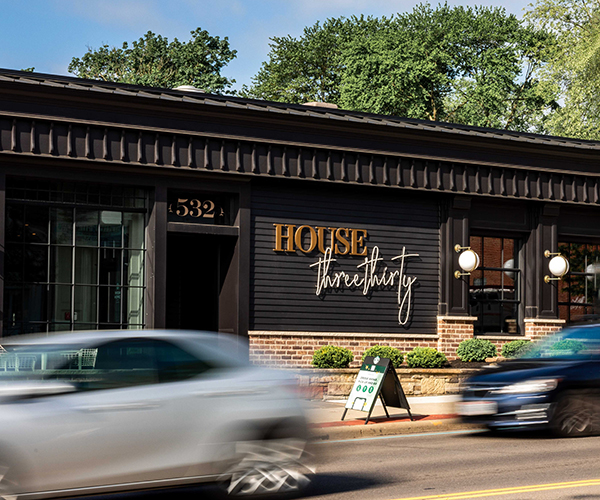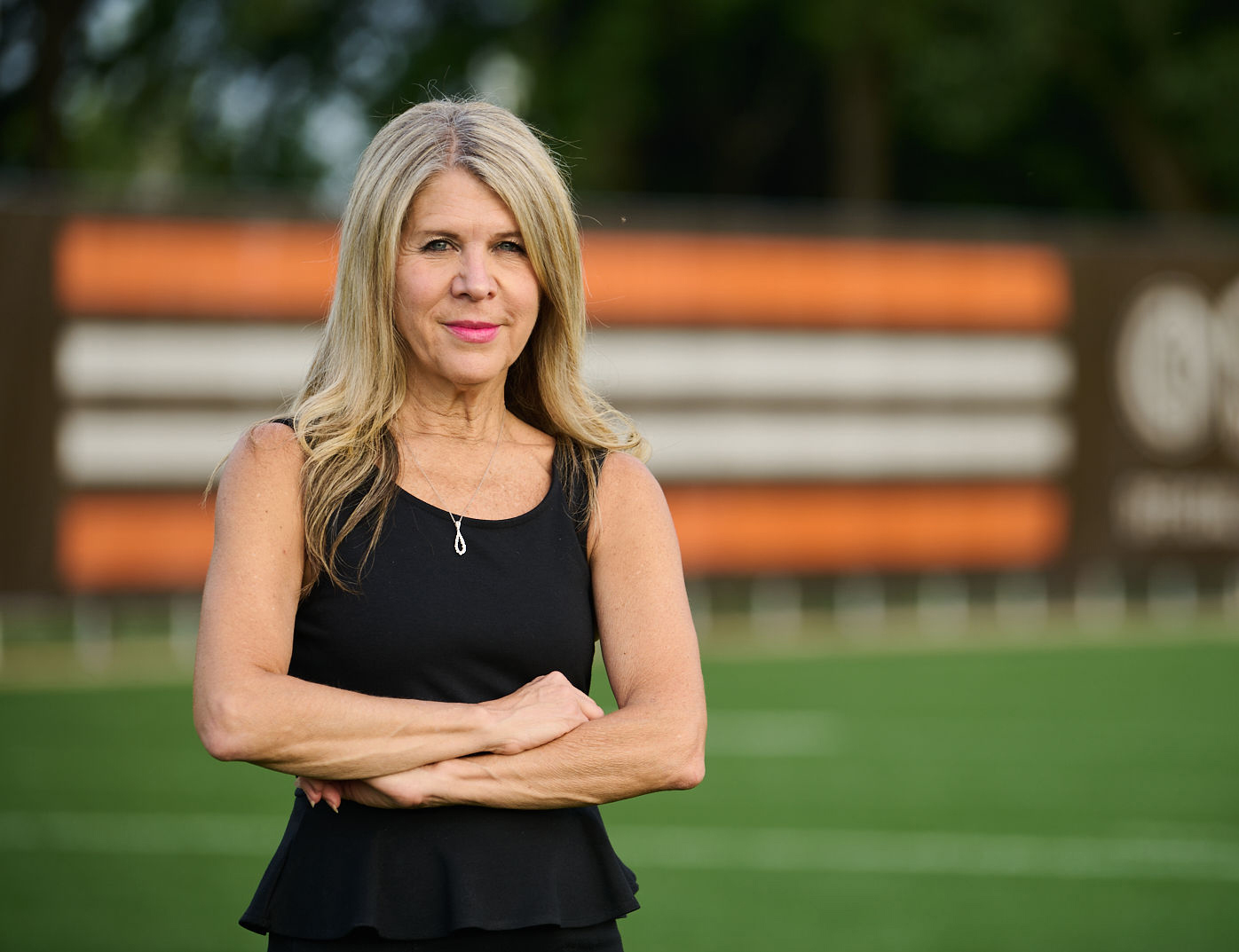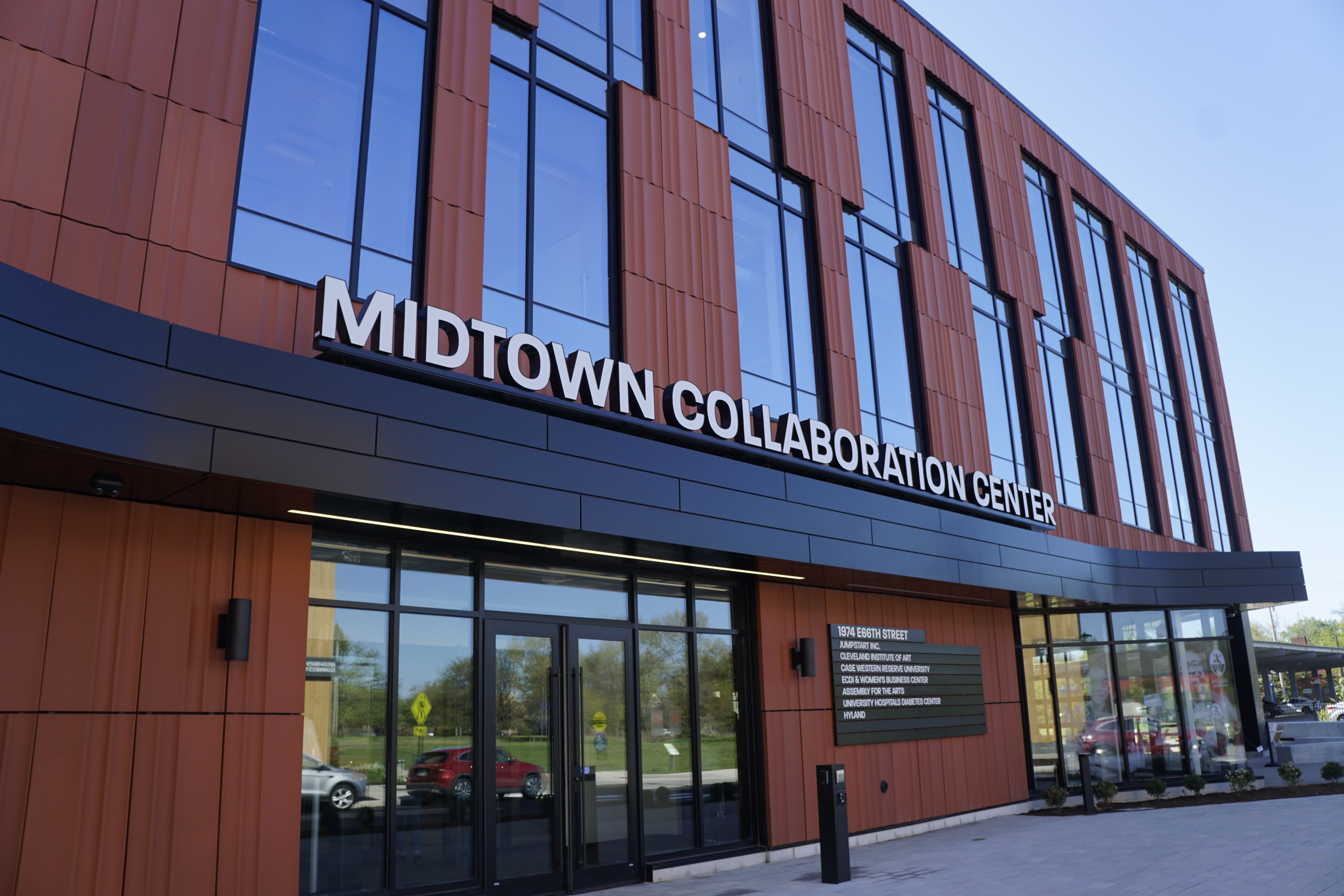Rid-All Green Partnership Uplifts Urban Farming In Cleveland
by Candice Wilder | Jul. 7, 2021 | 12:00 PM
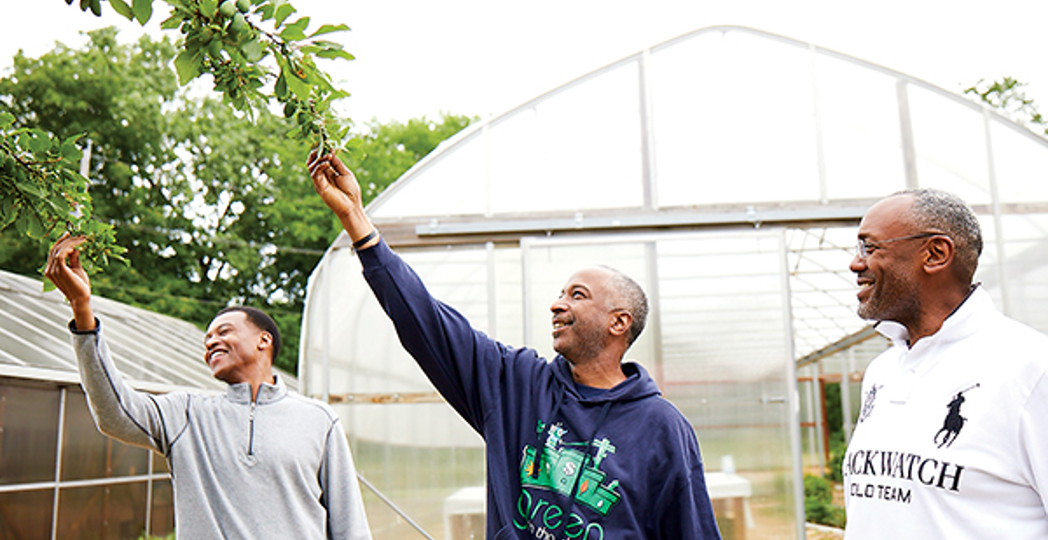
Tim Durning, Kevin Kopanski
Randell McShepard strides toward the corner of East 82nd Street and Otter Avenue in dusty blue jeans, mud-spattered boots and a worn, plaid flannel. On a warm mid-morning in May, McShepard is exactly where he wants to be: basking in the bright sun and sauntering across Rid-All Green Partnership’s farm campus.
Ahead of him, volunteers and farm hands sweep the grounds and bustle across the yard with folding tables, umbrellas and chairs in preparation for the organization’s Armed Forces Day celebration. As McShepard nears the paved street, he turns to face the two large plastic vinyl high tunnel greenhouses erected in front of him.
“As I look back this way, and take this all in, I think about the fact that this area is such a unique place to start a farm,” says McShepard.
As a co-founder of the nonprofit urban farm, McShepard points to the north where a Blue Line RTA rapid train rumbles past on an overhead bridge. He then motions to the east, drawing an imaginary line to where a set of train tracks sit and talks about the industrial corridor that buffers East 81st Street, a main street of the lower Kinsman and Central neighborhoods. Those three points make up what was once known as the Forgotten Triangle.
In the 1970s, this pocket of the community was cited by the Environmental Protection Agency as a notorious illegal dumping ground in the city of Cleveland. A private arsonist who worked with a city demolition crew burned down 28 homes on East 81st, East 82nd and East 83rd Streets, leaving the area unprotected and suitable for crime.
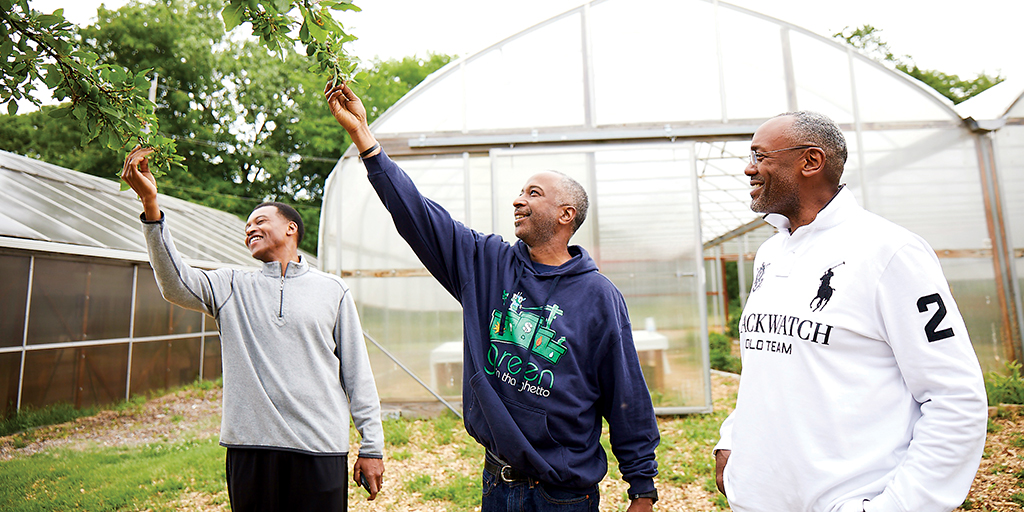
“Residents had this saying that the population of this area would trickle up at night because of the lack of eyes on the street,” McShepard says. “It became the perfect place for dumping waste and all sorts of criminal activity.”
When McShepard and the Rid-All team first visited the area in 2010, the yards of occupied homes and abandoned houses were littered with burned-out cars, rusted boat parts, refrigerators, rubber tires, mounds of trash and debris. He even recalls a moment, early in building the farm, when they saw police carrying a body that had been found.
“It was a very scary place to be,” McShepard continues. “When we first got here, we really had to put on our imagination caps and say, ‘This could be great someday.’ ”
Now, McShepard strolls among a sprawling green oasis packed with two greenhouses and six large hoop houses for growing vegetables such as kale, lettuce and collards. There’s an aquaponics tilapia farm housed on the lot that sells and supplies fish to local minority chefs and restaurants. There’s an education center that functions as an event space and a community kitchen that operates as a catering and meal preparation station. There’s a treehouse and canopy teepee providing youth, residents, volunteers and visitors a serene space for meditation classes. And there’s a compost operation that turns thousands of pounds of food waste from the city into Rid-All’s signature, black gold compost soil.
What began as just 1.3 acres of vacant property in 2010 has now amassed into Rid-All Green Partnership’s urban farm, a world-renowned urban agricultural center located in the heart of one of Cleveland’s oldest neighborhoods. In the last decade, the partnership has expanded its campus to include 15 surrounding acres and a farmers market in a nearby community, all of which has been used as an enterprise to grow the farm across 18 different revenue streams. And the neighborhood surrounding the farm has grown as well, blossoming into an experimental hub for economic development, housing and agriculture for the city.
“It’s no secret [Rid-All] has taken the city by storm because people just can’t believe how much could be done in reshaping a community,” McShepard says.
With the idea to transform communities, repurpose blighted, vacant land and improve the overall health and quality of life for its residents, co-founders McShepard, G. Keymah Durden III and the late Damien Forshe have spent the last 10 years educating residents about the benefits of eating fresh, healthful foods, creating opportunities for employment and empowering residents to grow their own food for autonomy and profit. Now, McShepard and Durden are dreaming up bigger plans for the next decade: how to transform the nation with their urban agricultural model.
“We’ve had visitors from other locales come and take a tour, and we’ve watched grown men and women break down and cry,” McShepard says. “They always say to us, ‘This really shows what is possible for urban communities all over the country.’ ”
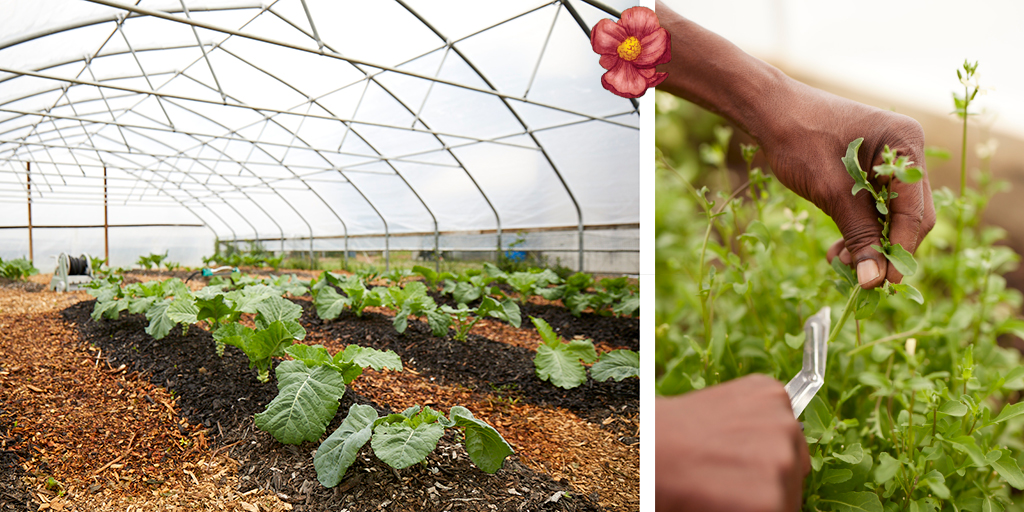
The seeds of Rid-All sprung from Forshe. In the early 2000s, as part of a healthy homes prevention initiative from Environmental Health Watch, Forshe worked with the organization to begin thinking of natural ways to exterminate pests in residential housing units. Instead of spraying chemicals and poisons, Forshe, who owned Rid-All Exterminating, used peppermint oil and cayenne pepper to chase away mice and rodents.
“He truly began to think about greener approaches to solve big world problems and environmentally focused solutions,” says McShepard.
While Forshe continued to apply natural solutions on his own, McShepard wrote and published a 2009 research report on the decline of urban neighborhoods in Cleveland for PolicyBridge, a public policy think tank he co-founded. Data suggested nearly 10,000 homes would be demolished in the city and turned into vacant lots. McShepard consulted with his childhood friends, Forshe and Durden, who saw it as an opportunity to build a farm.
“One of the suggestions I wrote in the report was to assemble all the vacant land and use it as areas to add value and purpose in urban core communities,” McShepard says. “Damien and Keymah initially saw it as a blueprint and vision for something we could do in this city.”
In December 2009, McShepard, Forshe and Durden traveled to Milwaukee to meet and study with Will Allen, an urban agricultural expert and founder of nonprofit, Growing Power. Over the course of a five-month commercial agriculture training program, the three friends gained insight into the urban agriculture industry.
“He told us in order to build a farm, we needed continuous amounts of vacant land,” says Durden, chief administrator of Rid-All Green Partnership.
They established Rid-All as a nonprofit and sat down with Cleveland’s planning director, requesting maps to scout for available properties. One of those properties was the 28-acre abandoned area in the lower Kinsman and Central neighborhoods, an area known as the Forgotten Triangle. While it wasn’t ideal, the co-founders knew it was crucial for their plan because of its abundant greenspace.
“We had been looking far and wide across the city and this was the area they pointed us to,” McShepard says.
In the early 20th century, the Kinsman and Central neighborhoods were a gateway for newly arrived Eastern European immigrants and African Americans escaping the violence and economic ruin of the Jim Crow South. With the community located only a few miles from downtown, a hub for railroad, industrial and factory work, it was a prime location for migrant enclaves to settle and transition into a new life. Between 1910-1920, African Americans uprooted from states like Alabama and settled in Cleveland, increasing its Black population from 8,448 to 34,451, with the majority settling in the Central neighborhood.
With the onset of the Great Depression and development of the New Deal Public Works Administration, Kinsman and Central became one of the first locations for Cleveland’s largest concentration of public housing. Sociologists and urban developers marked the neighborhood as impoverished, and city planners drew up maps for the development of segregated public housing and settlement camps. At the same time, real estate agencies, mortgage brokers and banks drew redlines on residential maps in this area, providing no loans or support for businesses, housing and infrastructure. For decades, with the culmination of disinvestment, white flight, depopulation and unemployment, the Kinsman and Central neighborhoods fell into disrepair and were subjected to cycles of economic decline, violence and abandonment.
“Our farm is nestled right in Garden Valley, where a good majority of the homicides, shootings or crime that takes place in the city or negative things you hear about Cleveland in the news echoes around that three- or four-mile radius,” Durden says. “We ultimately saw the area as a blank canvas, as an opportunity for change.”
In 2007, the 28-acre area had been named as the Urban Agricultural Innovation Zone by Burten, Bell, Carr Development, Buckeye, Kinsman and Central’s community development corporation.
“It didn’t make sense to build more houses as the population in Cleveland had changed, as well as the real estate market at the time with the foreclosure crisis,” says Joy Johnson, executive director of Burten, Bell, Carr Development. “The community had already expressed interest in doing something like urban farming or agriculture with the vacant lands.”
With the help of Burten, Bell, Carr Development, the Rid-All Green Partnership began acquiring land within the 28-acre area, buying up properties owned by the Cuyahoga Land Bank and the City of Cleveland Land Bank. In February 2011, Rid-All built its first greenhouse, using it to develop compost soil and experiment with plants to see how well they’d grow. For the first three years, Rid-All continued to clean up the properties it secured, adding hoop houses for growing fruits and vegetables such as tomatoes and cucumbers. The trio eventually uncovered a road, Fort Avenue, in 2014 that had been covered by brush and debris for 30 years. In order to develop the property further, they used the road as the location for a composting facility.
“Carving out a place dedicated to making compost really solidified what we could do in the future, not just with growing food, but with the land,” McShepard says.
The partnership added new value to the property by building wooden gates and planting gardens, flowers, trees and orchards. Rid-All cleared more land and added a greenhouse to supply its fish farm. In 2020, the group added a community kitchen for demonstrations, with the potential of opening a restaurant in the future.
“We began to see young ladies walking their dogs, basketball pickup games, families celebrating birthday parties and having cookouts at the park again,” McShepard says.
Rid-All brings in roughly 3,000-5,000 tourists from around the world each year and has been monumental in helping Burten, Bell, Carr Development revitalize the community and increase resident participation.
“They are always adding something new every year,” Johnson says. “Rid-All now stands as this national model for urban agriculture.”
Over the years, Rid-All’s founders observed that centralizing the farm in the Kinsman and Central neighborhoods allowed them to transform the community through urban agriculture and sustainability, impacting how residents viewed their own neighborhood.
“Hope is an invaluable commodity,” Durden says. “From the personal conversations and testimonies we get, people now have a solace they can call home.”

A few days a week, you can find Debra Wells at the Rid-All farm, walking between raised vegetable beds, stooping to pluck greedy weeds and assisting new volunteers with urban agricultural training.
Wells’ journey with the farm began in 2012, when she attended the Race, Food and Justice Conference held by Environmental Health Watch, Case Western Reserve University’s Social Justice Institute and the Rid-All Green Partnership. A retired postal service worker, Wells already had a passion for gardening from the traditions she learned from family members in Georgia.
“It wasn’t hard to convince me,” says Wells, head volunteer at the Rid-All farm.
Many of her family members had resided in the lower Kinsman and Central neighborhoods for more than 50 years. Frequent visits to her uncle’s and aunt’s led her to develop close friendships and deep, long-standing connections. As a teenager, Wells had witnessed the transformation of the lower Kinsman and Central neighborhoods into a dump site before it became Rid-All’s farm.
“People would tell me they couldn’t see this area growing into something other than a wasteland,” Wells says.
Two years ago, Burten, Bell, Carr Development constructed its first retail venture: BoxSpot, an entrepreneurial market comprised of shipping containers with local businesses and community spaces and the goal to stimulate the local economy. It also worked with the Cuyahoga Land Bank to demolish abandoned houses in the area to make way for updated, affordable living options and greenspaces, which includes more than 700 housing units, nearly 400 of which are single family homes. Its most recent expansion began in 2017, when the CDC was awarded $8.25 million in housing tax credits from the Ohio Housing Finance Agency to build Colfax Family Homes, which will be available to residents who earn less than the area’s median household income. Separate plans are also on the horizon to construct a senior living center off Kinsman Road. According to Cleveland Neighborhood Progress and the Center on Urban Poverty and Community Development at Case Western Reserve University, Central has seen nearly a 3% increase in population and job creation since 2014.
For Wells, these changes stem directly from the work that’s taken place between Burten, Bell, Carr Development and Rid-All Green Partnership and how the two organizations envisioned the future of the neighborhood. As the Urban Agricultural Innovation Zone, it’s a hub designed for training community members on how to grow and utilize greenspace for self-sufficiency. When Wells began working with the partnership, she remembers the hoop house constructed on the small patch of land. The team started her out in composting, where she took apart the rubber bands and wrappers off donated old fruits and vegetables, collected coffee grounds from neighboring cafes and added them to the piles of wood chips. Over the years, the partnership added more to the lot.
“They were so committed to it,” Wells says. “To see the potential was courageous.”
Since working at the farm, Wells has ventured into her own gardening projects, mastering perennials, composting and growing various vegetables in her home. As a trainer, she continues to elicit advice and equips newcomers to the farm with best practices.
“Whatever I was weak at or didn’t know how to do, I got strong at it being with Rid-All these last 11 years,” Wells says.
Wells spends a few days each week assisting Durden and McShepard with training classes and various responsibilities in tending the farm. In December 2020, Rid-All completed construction on the Community Kitchen, which houses the Keymah Durden Culinary Center, a communal space for cooking demonstrations, food preparation and packaging for large events. The partnership has plans to open a restaurant with space for celebrations and gatherings to continue building upon the legacy of Rid-All’s vision. Wells and various other volunteers and chefs continue to train others and host food giveaways to strengthen neighborhood roots.
“Being a volunteer, I’ve had my hands in all of it and I love it,” Wells says. “Now whenever I invite people to take a tour, they always tell me, ‘I never knew this was here and never thought this could happen in this city.’ It’s something that I’m incredibly proud of.”
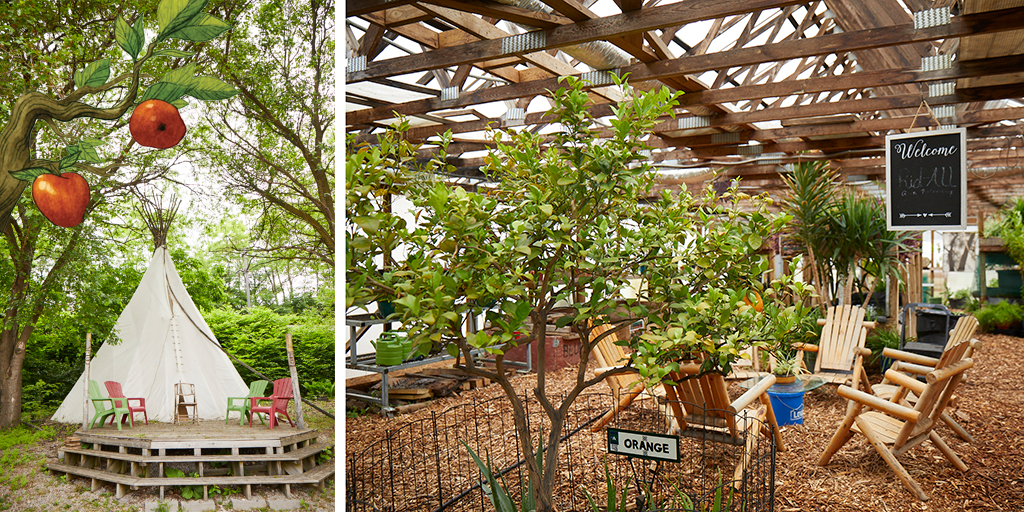
Under a large red and white tent, a small group of community members wait silently as the U.S. Marines color guard assembles for a posting of the colors ceremony. For Armed Forces Day, the Rid-All team prepared a celebration to welcome and honor veterans who volunteer and train at the farm, as well as inform veterans of available services and the new, affordable housing program at the Walter Collins Veteran Housing and Services Facility.
When the ceremony is over, members are invited to view the Victory Garden dedicated to many of its veteran staff. Adorned in all five branches of the military flags, veterans who visit now have a dedicated space for rehabilitation, connection and training allowing them to pour their time into farming and relaxation post combat.
For the Rid-All team, it’s the one day to witness the immense amount of gratitude for what they’ve done for the community.
“Everyone kind of claims the farm as a little bit of them, their story, their community,” McShepard says. “We want people to come back and feel they have a home here. That’s the motto of Rid-All.”
McShepard continues to take in the surrounding scenery, still in awe of the team’s accomplishments, despite the absence of his dear friend and former co-founder, Forshe, who died in 2018.
“He always said he wanted this to be the Disney World of urban agriculture and we pretty much have reached that status,” McShepard says.
The team continues thinking of larger, greener solutions. Rid-All recently applied for its farm to become a tree nursery, partnering with the Cleveland Tree Coalition and Western Reserve Land Conversancy’s carbon drawdown initiative, which aims to reduce carbon in the atmosphere through the regeneration of plants. The team also began meeting with architects about using the last 10 acres of land they acquired to build a health clinic and food packaging warehouse to provide for residents in the community.
“I think the 3.0 version of Rid-All is seeing how we can replicate this model in other cities and communities,” McShepard says. “Every city deserves a Rid-All farm.”
This month, Durden will become the farm’s full-time executive director, providing opportunities for the farm to expand its model by partnering with new businesses.
“For all the ills and challenges the lower Kinsman and Central neighborhoods have had in the past, there’s something truly special going on here,” Durden says. “Roses can grow from concrete and prove nature wrong. All you have to do is plant those first seeds.”
Trending
-
1
-
2
-
3
-
4
-
5

